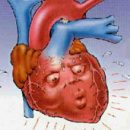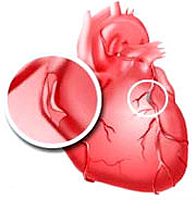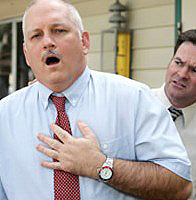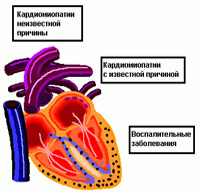What is the patch of the heart during an atrioventricular channel, the stenosis of the pulmonary artery, which operations are necessary and what results should be expected? Read in this article.
Content
Atrioventricular canal
To describe this complex vice there are many terms.
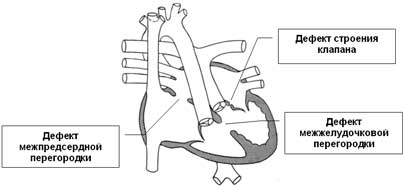 Atrioventricular canal — This is a big hole in the heart of the heart. It occurs in the place where the partitions of the interpresentation and interventricular. Thus, this defect concerns both atria and ventricles. Tricook and mitral valves, normally separating the upper chambers of the heart from the lower, are not formed at the same time in the form of individual valves. Instead, there is one large valve, echoing through a defect.
Atrioventricular canal — This is a big hole in the heart of the heart. It occurs in the place where the partitions of the interpresentation and interventricular. Thus, this defect concerns both atria and ventricles. Tricook and mitral valves, normally separating the upper chambers of the heart from the lower, are not formed at the same time in the form of individual valves. Instead, there is one large valve, echoing through a defect.
This large hole in the heart of the heart allows «Alooy» oxygen-enriched blood from the left left sections in the right departments. From there blood, mixing with blue venous again enters the lungs. The heart has to pump additional blood, which leads to an increase, or hypertrophy, heart muscle. Symptoms of the disease can appear after a few days or months after birth. Most children with an atrioventricular channel lag behind in growth and physical development. Due to the enhanced blood flow in the lung vessels, pressure in the pulmonary artery increases and the vessels of the lungs are damaged.
In some children, the total valve between the upper and lower parts of the heart is not completely closed, allowing blood to reduce the ventricles to flow back from the lower parts of the heart to the upper. This outflow, called regurgitation, or failure, may occur in the right, left or both parts of the heart. With the valve insufficiency, the heart has to pump excess blood. It is evenly overwhelmed and increases in size.
Surgery. If a child has a severe clinical course of the disease with high blood pressure in LA, the operation should be done in early childhood. During operation, the hole is closed by one or two patches. The postponement will then tap the hearts with their own tissues and will become part of it. The surgeon will also separate one valve, distinguishing the upper and lower hearts, into two separate, as a result of the reconstruction, these valves will be very close to normal.
Surgical correction of an atrioventricular channel contributes to the normalization of blood circulation. However, the reconstructed valve can work and not quite normal. This valve can «leak» or be too narrow.
Sometimes this vice is too complicated to correct it in childhood. In this case, the surgeon can narrow the pulmonary artery by reducing blood flow and pressure in the pulmonary vessels. This procedure is called the escape of the pulmonary artery. When a child becomes older, the narrowing cuff will be removed and a radical correction of vice. Sometimes additional operations are required or therapeutic treatment.
Stenosis of the pulmonary artery
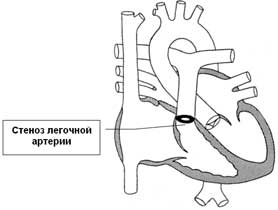 The pulmonary valve opens to skip the blood from the right ventricle into the lungs. The narrowing of the pulmonary valve (stenosis of the pulp) forces the right ventricle to swing blood through this barrier with great effort. With severe stenosis, especially in infants, cyanosis may be observed (silance). Children's older symptoms may not be.
The pulmonary valve opens to skip the blood from the right ventricle into the lungs. The narrowing of the pulmonary valve (stenosis of the pulp) forces the right ventricle to swing blood through this barrier with great effort. With severe stenosis, especially in infants, cyanosis may be observed (silance). Children's older symptoms may not be.
With high pressure in the right ventricle, surgical treatment is necessary, even if there are no symptoms. Operation is carried out under the conditions of artificial blood circulation and is the restoration of the normal flowability of the pulmonary artery valve.Often, the narrowing can be eliminated during catheterization using balloon valvoplastics. During this procedure, a special catheter with a balloon is held in the region of the pulp. When filling the balloon expands the valve.
Perspective after surgery in the patient good. However, the observation of the child after these procedures will still need to make sure that the heart is normal.


